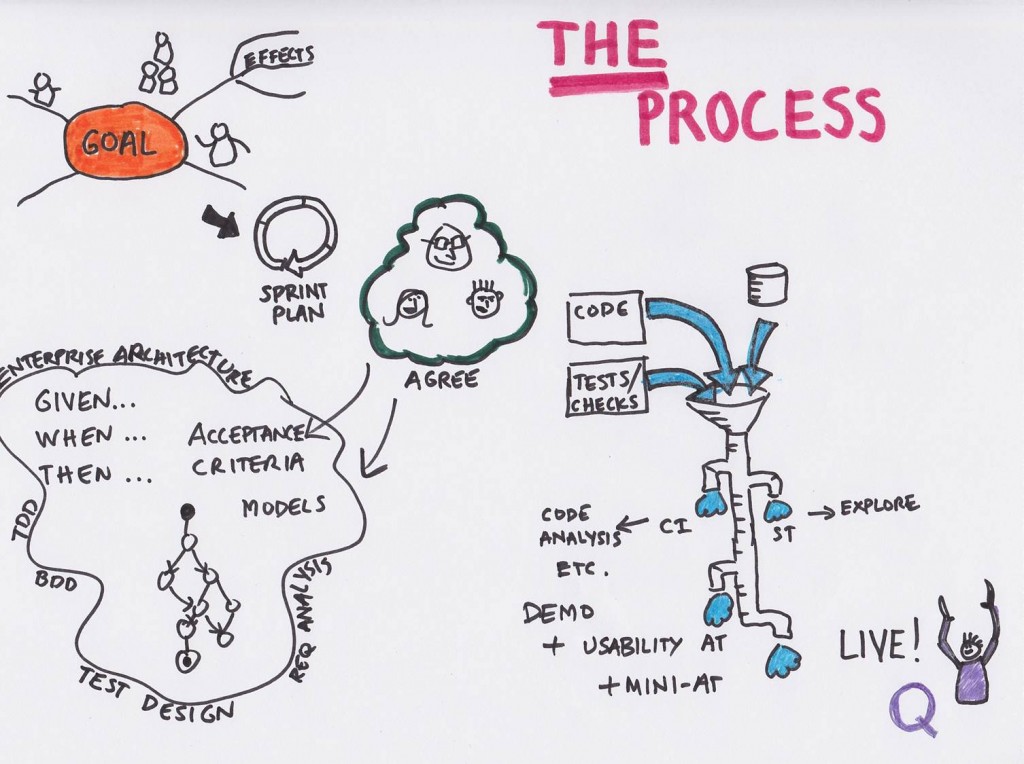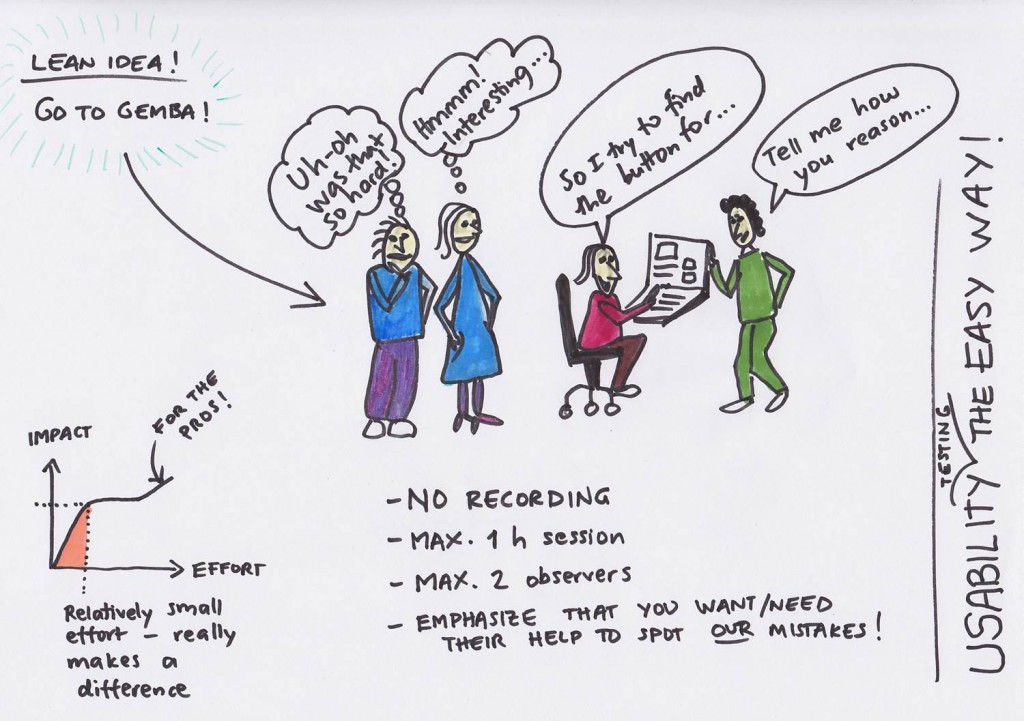So it is 2013 and I am trying to figure out the next step on my trip of constant learning. Having thought about this a lot on my own I started to make a plan. I like planning. It helps me to focus. It´s like writing this blog – I have to structure my knowledge in order to make things readable and that is a learning experience in itself.
First Coaching Session
I managed to squeeze in an informal coaching session with friend and colleague as well as professional coach Mattias Nordin over a bottle of wine. “In vino veritas”. A very simplified version of our coaching session is the following conversation:
- So we meet in the French alps in three years – what are you up to these days?
- Well I am working with some Lean projects at the moment and try to do a lot of outdoor stuff like skiing. (vision)
- So how did you get to be where you are?
- Well I got myself a Lean mentor and read a lot of books and then started to participate in some Lean projects mostly managed by my mentor. (plan)
- So how was the first year (2013)?
- Well I found a mentor, read this list of books and worked in my first lean projects as an assistant. (Immediate action!)
A more thorough coaching with Mattias is typically six two-hour sessions. But this is a good start to get a feel for it and forces me to focus. If you have not had this type of talk with someone lately – give it a try. Maybe you have an HR-function at work, a boss or colleague skilled in this or find a coach like Mattias. It may change your future!
Searching for information
As you may have guessed from the title of the post, my plan is to go Lean. This may mean becoming a Lean coach or finding what lean can do for testing, I do not know yet. From what I have read about Lean so far there seem to be a lot of good stuff that may benefit me whatever I do in the future.
The world is flooded by Lean books – all describing their own interpretation of what it is all about. The origin is TPS – Toyota Production System - focused on production lines in factories. However the Lean ideas are applied throughout the whole Toyota organization so there is a lot of good stuff even though I am not planning on working in a factory. The factory thing is a regular comment when discussing Lean according to my mentor so we will get back that question in a later post.
The first book I read on the subject was Lean SW development – how can Lean ideas be applied when building code. I think it has some interesting ideas but since it was a year since I read it I will not write any detailed analysis.
The next book I read was Kanban by David J Andersson. The focus here is maintenance – this is a more direct application of factory thinking. Focus is on getting a flow efficient organization that strives to go from input in the form of most serious problem right now to solved problem as fast as possible. The author´s point is that Kanban is really a way of transforming your organization to Lean. The case stories are really impressive and he manages to convince me that Kanban as decribed in his book is really a good way of working with maintenance. He also points out that most Kanban-style organisations use parts of Scrum as well. I have heard someone interpret Kanban as – “we do not have to have any releases like in Scrum”. The truth is quite the opposite – in order to get good flow most organisations use frequent releases – only a fraction has taken the step to Continuous Deployment where every little change is deployed instantly to production.
Next book I read was The Lean Startup by Eric Ries. How can we be effective as entrepeneurs? How can we build companies and products in a Lean way? Most important message here is not to spend huge amounts of money before you know what a potential customer really wants. Really makes a point - too many try to create and implement pretty detailed and heavy processes, products etc without knowing what the intended user wants or needs.
Getting a Mentor
I have realized that in order to in order to succeed with my goal of really learning Lean I must understand the theory behind and practice in real projects. To keep me on the right track I need a mentor. That said, I recently joined the company Kvadrat and a colleague of mine, Anders Häggkvist, with many years of experience in Lean volunteered to be my mentor. Next blog post will be on our first meeting.
Status of learning:
Books read on Lean:
1)Lean Startup: focused on how to handle a start-up with low cost until you know what to build, Like a prototyping handbook.
2)This is Lean: a great beginners book on the essence of Lean. Great book to hand out in an organisation to get everyone started
3)Scrum and Kanban - making the most of both: Kniberg
4)Lean SW Development: Poppendieck
5)50 nyanser av Lean: a bit thin and only available in Swedish. Has some important learnings on why Lean implementations fail and others succeed
Work done:
Worked as Scrum master in several projects
Created a quality assurance process for development with a distinct flavor of Lean
Was Project manager for implementation of continuous integration with special focus on my part for test automation.
Plan for the next month:
Blogg about my progress including the books I read and the following discussions
Read: The Toyota Way to Lean Leadership: Liker, Convis
Have meeting number two with mentor to discuss what I have read so far – next week.
Plan for the next year
Become a Certified Scrum Master
Read: discuss with mentor if I should read more books or work with the ones I read.
Work: participate in at least one Lean project, participate in Lean Box work (c)



